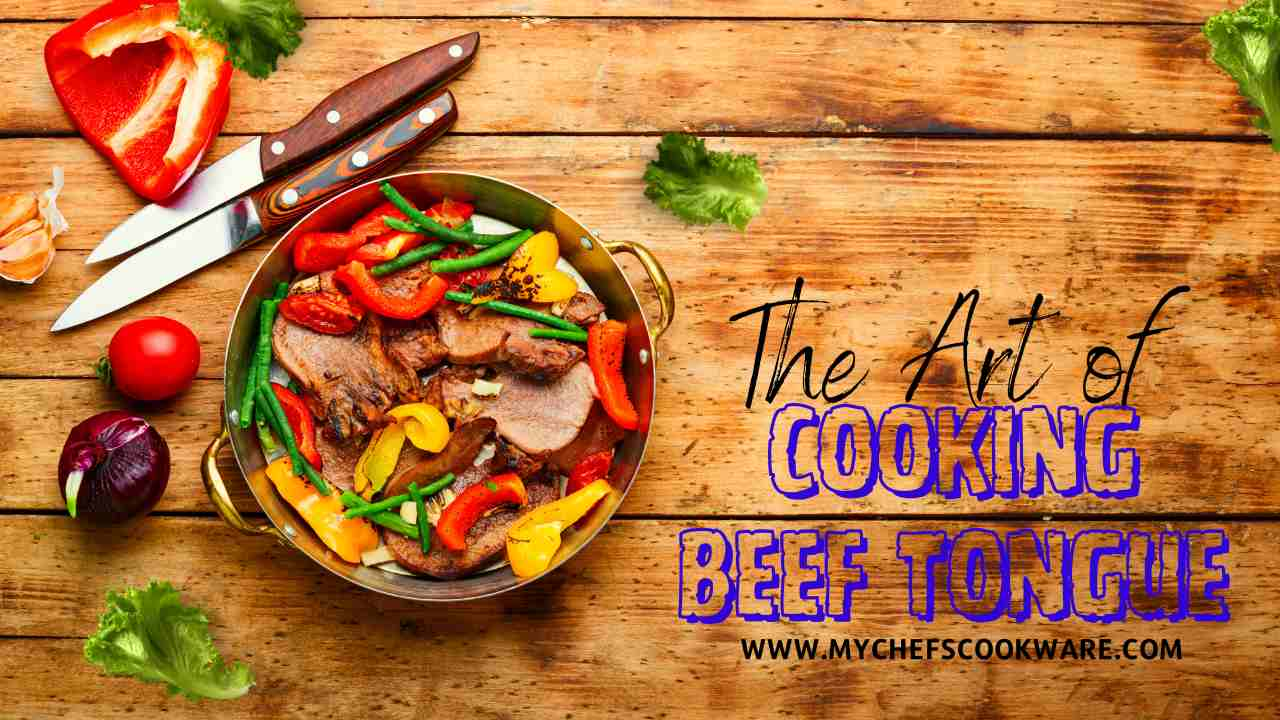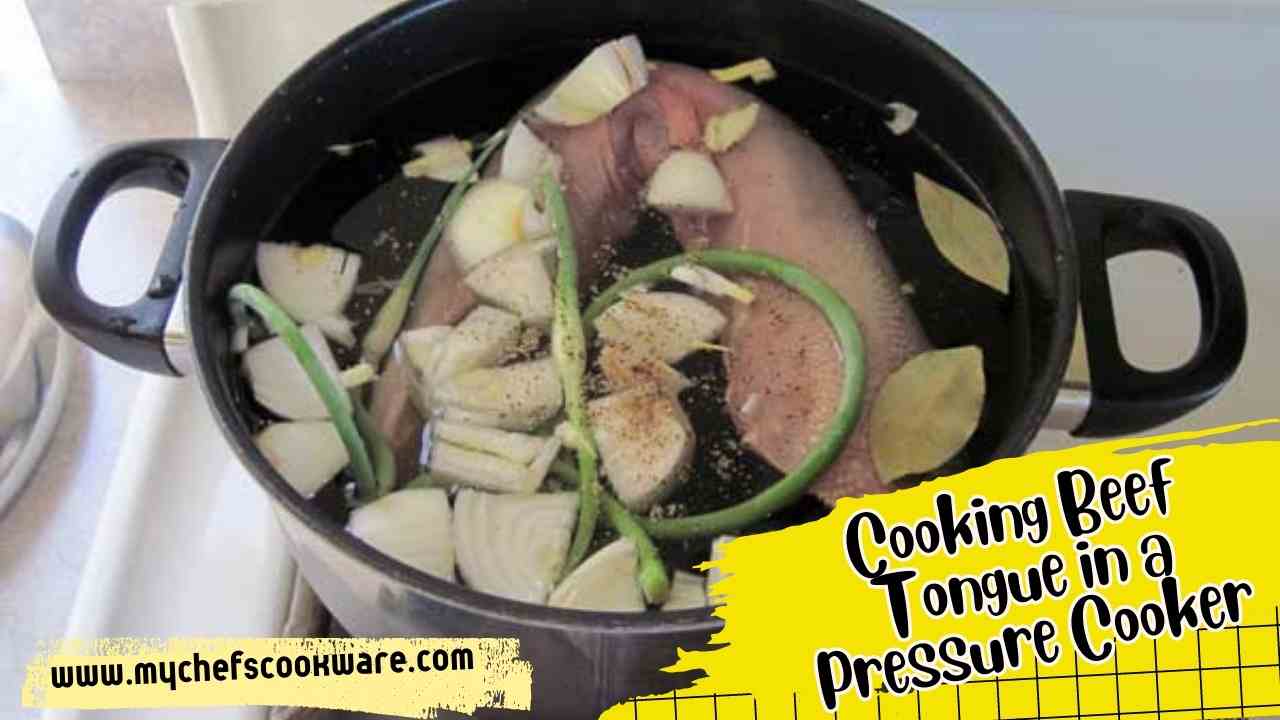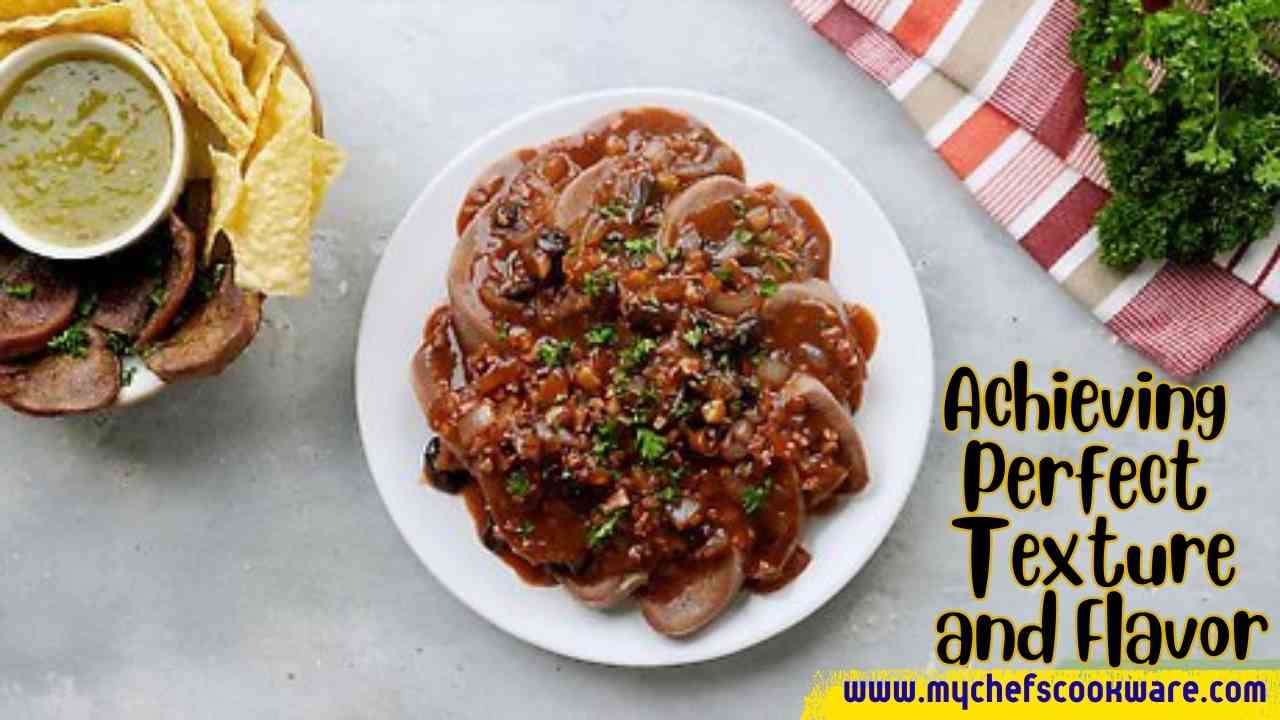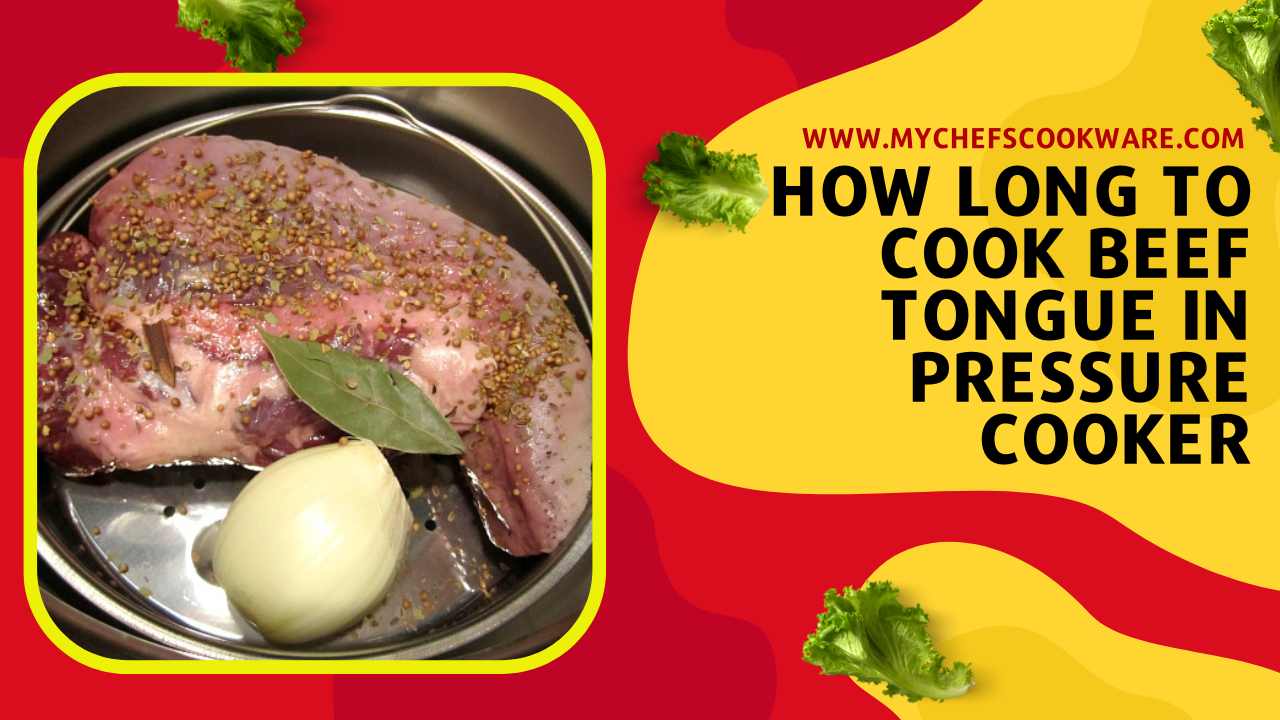Cooking beef tongue to perfection requires precision and careful consideration. As a culinary delicacy renowned for its unique flavor and tender texture, beef tongue holds a special place in the hearts of food enthusiasts. When it comes to preparing this delectable ingredient, using a pressure cooker can significantly streamline the cooking process and deliver outstanding results.
While it’s important to note that cooking times may vary based on the size and thickness of the beef tongue, a general guideline for cooking beef tongue in a pressure cooker is approximately 45 minutes to 1 hour per pound of meat. It’s always recommended to consult the specific instructions of your pressure cooker and adjust the cooking time accordingly.
Throughout this article (how long to cook beef tongue in pressure cooker), we will provide you with insights and tips to help you achieve tender and flavorful beef tongue in your pressure cooker. We will also discuss factors that can influence the cooking time, such as the desired level of doneness and the specific recipe you’re following.
The Art of Cooking Beef Tongue (How Long to Cook Beef Tongue in Pressure Cooker)

In the realm of culinary artistry, cooking beef tongue involves a deep understanding of its distinctive qualities, exploring diverse cooking methods, and leveraging the advantages of using a pressure cooker. This section takes you on a gastronomic journey, revealing the secrets behind mastering the art of cooking beef tongue.
Understanding the Unique Qualities of Beef Tongue
To truly appreciate the art of cooking beef tongue, it is essential to grasp its unique qualities. Delighting the taste buds with its rich and beefy essence, beef tongue showcases a melt-in-your-mouth tenderness derived from its high collagen content. This versatile ingredient can be transformed into an array of mouthwatering dishes, from comforting stews to tantalizing tacos.
Exploring Different Cooking Methods and Their Advantages
In the pursuit of culinary excellence, a range of cooking methods unveils diverse possibilities for beef tongue. Each method carries its own merits and considerations. Braising, a slow simmering technique, bathes the tongue in a flavorful liquid to achieve unparalleled tenderness. Boiling, on the other hand, entails submerging the tongue in water and patiently cooking it to the desired doneness. Grilling and smoking offer an alternative approach, imparting a delightful smoky nuance to the meat.
Leveraging the Advantages of Using a Pressure Cooker
When it comes to cooking beef tongue, harnessing the advantages of a pressure cooker unlocks a realm of culinary possibilities. The pressure cooker harnesses the power of steam and high pressure to expedite the tenderization process. Within its sealed environment, the pressure cooker effectively retains moisture and flavors, resulting in succulent and tantalizing beef tongue. Moreover, this culinary tool significantly reduces cooking time compared to traditional methods, offering convenience to the discerning cook.
Read Also Lagostina Pressure Cooker: Your Secret to Fast, Flavorful, and Healthy Meals
Cooking Beef Tongue in a Pressure Cooker

Before embarking on the journey of cooking beef tongue in a pressure cooker, it is crucial to select a high-quality tongue and properly prepare it. Look for a fresh, well-trimmed tongue from a trusted source. Rinse the tongue thoroughly under cold water to remove any impurities. Optionally, you can peel the outer layer of skin for a more refined presentation. Pat the tongue dry with a paper towel, and it’s ready for the next step.
Seasoning and Marinade Options for Enhancing Flavor
One of the joys of cooking beef tongue lies in the opportunity to infuse it with a variety of flavors through seasoning and marinades. Consider marinating the tongue overnight or for a few hours before cooking to enhance its taste. Experiment with ingredients like garlic, herbs, spices, and even a touch of acidity from citrus or vinegar. This process not only adds depth to the flavor but also helps tenderize the meat.
Step-by-Step Instructions for Cooking Beef Tongue in a Pressure Cooker
Preparing the Pressure Cooker and Ingredients
Begin by ensuring your pressure cooker is clean and in good working condition. Place the beef tongue in the pressure cooker, along with aromatic ingredients such as onions, garlic, and herbs. Add enough liquid, such as broth or water, to cover the tongue partially.
Setting the Cooking Time and Pressure Levels
Consult the manufacturer’s instructions for your pressure cooker model to determine the appropriate cooking time and pressure levels for beef tongue. As a general guideline, set the pressure cooker to high pressure and adjust the cooking time based on the weight and thickness of the tongue. Typically, it takes around 30-45 minutes per pound of tongue.
Monitoring the Cooking Process
Once you’ve set the pressure cooker, ensure the lid is securely locked in place. Allow the pressure to build up inside the cooker until it reaches the desired level. Then, reduce the heat to maintain a steady pressure. Keep a close eye on the pressure gauge or indicator to ensure it remains within the recommended range.
Releasing Pressure and Checking for Doneness
After the cooking time elapses, carefully release the pressure according to the instructions provided with your pressure cooker. Once the pressure has completely dissipated, open the lid cautiously. To check for doneness, insert a fork or meat thermometer into the thickest part of the tongue. The internal temperature should read around 160°F (71°C) for a fully cooked and tender result.
With these step-by-step instructions, you’re well on your way to mastering the art of cooking beef tongue in a pressure cooker. The tender and flavorful outcome will leave you and your guests craving more. Remember to let the cooked tongue rest for a few minutes before slicing it against the grain to maximize tenderness.
Cooking Times for Beef Tongue
When cooking beef tongue in a pressure cooker, it’s important to consider various factors that can affect the required cooking time. The size and weight of the tongue play a significant role, as larger tongues generally require more time to cook thoroughly. Additionally, personal preferences for tenderness can influence the cooking duration. By taking these factors into account, you can determine the ideal cooking time for your beef tongue.
Recommended Cooking Times for Different Sizes of Beef Tongue in a Pressure Cooker
To ensure your beef tongue is cooked to perfection, here are the recommended cooking times for different sizes of tongues in a pressure cooker:
Small-Sized Tongue (approximately 1-1.5 pounds)
For a small-sized beef tongue, aim for a cooking time of 25 to 30 minutes per pound. Adjust the cooking time accordingly if the tongue is slightly larger or smaller. Remember to consider your desired level of tenderness when determining the cooking time.
Medium-Sized Tongue (approximately 1.5-2.5 pounds)
When cooking a medium-sized beef tongue, allocate approximately 30 to 35 minutes per pound. Adjust the cooking time accordingly based on the specific weight of your tongue. Keep in mind your preferences for tenderness and adjust the cooking time if needed.
Large-Sized Tongue (approximately 2.5-4 pounds)
For a large-sized beef tongue, it is recommended to cook it for approximately 35 to 40 minutes per pound. Adjust the cooking time based on the actual weight of your tongue. Remember to monitor the tenderness and adjust the cooking time as per your preference.
Ensure that you follow the safety guidelines and instructions provided by your pressure cooker manufacturer. It’s essential to note that cooking times may vary slightly depending on your specific pressure cooker model. Therefore, use the recommended cooking times as a starting point and adjust accordingly based on your observations during the cooking process.
Achieving Perfect Texture and Flavor

Cooking beef tongue to perfection involves more than just following a recipe. Here are some valuable tips to help you achieve tender and flavorful results:
- Proper Preparation: Before cooking, ensure the beef tongue is thoroughly cleaned and trimmed of any excess fat or membrane. This step helps enhance the overall texture and taste of the tongue.
- Seasoning and Marinade: Seasoning the beef tongue with a combination of herbs, spices, and marinades can significantly enhance its flavor. Consider marinating the tongue overnight to allow the flavors to penetrate deeply into the meat.
- Searing for Flavor: Searing the beef tongue in a hot pan before pressure cooking can add a delightful caramelization and intensify the flavors. It also helps retain moisture and contributes to a mouthwatering final result.
- Adding Aromatics: Boost the taste of the beef tongue by incorporating aromatic ingredients like onions, garlic, and herbs into the cooking liquid. These elements infuse their flavors into the meat as it cooks, resulting in a more complex and enticing taste.
Resting and Slicing Techniques for Optimal Results
Proper resting and slicing are essential steps to ensure the tenderness and succulence of the beef tongue are fully preserved. Follow these techniques for optimal results:
- Resting: Once the beef tongue is cooked, allow it to rest for approximately 10 to 15 minutes before slicing. This resting period allows the meat fibers to relax and redistribute the juices throughout, resulting in a moist and tender texture.
- Slicing: When slicing the beef tongue, cut it against the grain. This technique ensures that the meat remains tender and easy to chew. Slice the tongue into thin, even slices to enhance its presentation and facilitate enjoyable eating.
Serving Suggestions and Complementary Accompaniments
To elevate the enjoyment of your beef tongue dish, consider these serving suggestions and complementary accompaniments:
- Plating: Arrange the sliced beef tongue on a platter, showcasing its tender texture and inviting aroma. Garnish with fresh herbs or a sprinkle of chopped green onions for an added touch of freshness.
- Sauces and Dips: Serve the beef tongue with a variety of flavorful sauces and dips. Classic options like horseradish sauce, chimichurri, or a tangy mustard sauce can complement the richness of the meat and add delightful contrast.
- Side Dishes: Pair the beef tongue with complementary side dishes to create a well-rounded meal. Consider serving it with roasted vegetables, creamy mashed potatoes, or a refreshing salad to balance the flavors and textures.
- Sandwiches and Tacos: For a casual twist, use the tender beef tongue as a filling for sandwiches or tacos. Add your favorite toppings and condiments to create a delicious and satisfying handheld meal.
Conclusion
In conclusion, cooking beef tongue in a pressure cooker offers a convenient and efficient method to achieve tender and flavorful results. By following the recommended cooking times, preparing the tongue with care, and implementing resting and slicing techniques, you can savor the delightful taste and texture of this culinary delicacy. Experiment with seasonings, sauces, and serving suggestions to elevate your beef tongue dishes and create memorable dining experiences. Embrace the art of cooking beef tongue in a pressure cooker and enjoy the delectable rewards it brings to your table.

